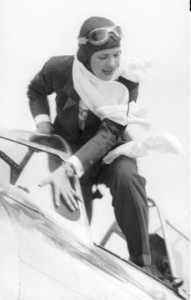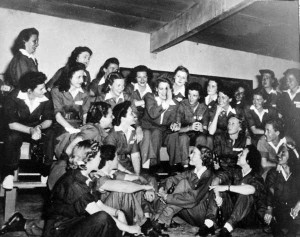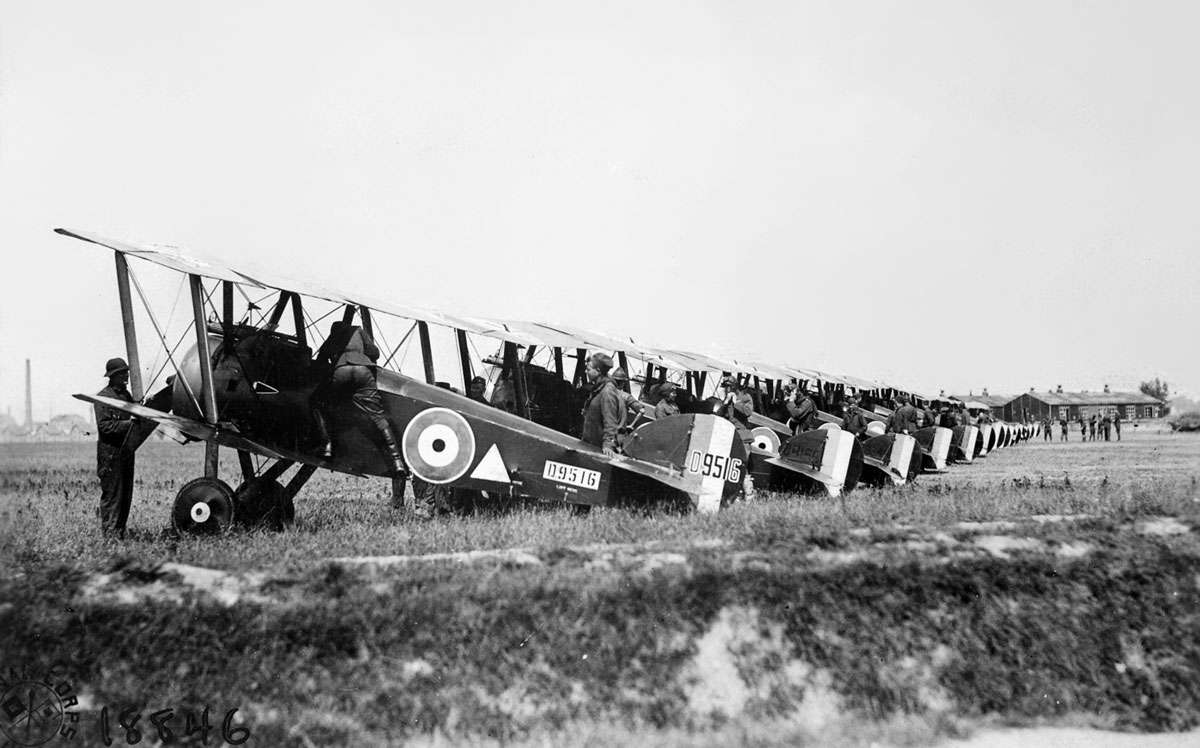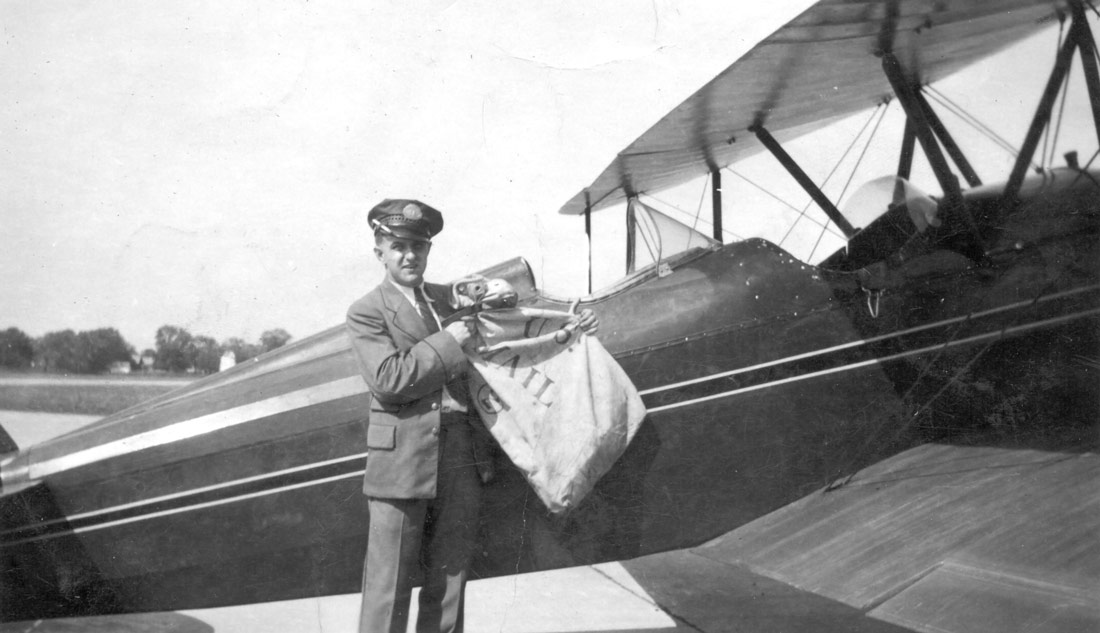Jackie Cochran Takes to the Sky
As she taxied towards the runway, some of her competitors doubted Jacqueline Cochran’s plane would make it into the air. Not because she lacked skill or experience – just one year earlier, she had placed second in the same race. No, it was because of the sheer weight of fuel she was carrying. Unwilling to lose time refueling, Jackie Cochran had told her engineers to add more fuel tanks to her Seversky SEV-S2. And so her plane was bulging with added fuel capacity. But with 541 gallons of fuel on board, it was far from certain that she would be able to leave the ground.
With that much fuel, a failed take off could very easily turn the craft into a flaming pile of metal. And it wouldn’t even have been that unusual. Motorsports have always been dangerous. Event organizers have always known that – it’s part of their appeal. But few sports have endangered their contestants as 1930s air racing did. It was a time when aeronautics was still in its infancy. Aircraft were slowly becoming safer, but engineers still had much to learn. And when it came to racing craft, safety wasn’t a prime concern.
The engineers were more concerned with pushing the performance envelope further. Speed, range, and agility were key. And so wings and flight surfaces would be cut back, and extra fuel tanks were added. And while these modifications did make for faster planes that could fly further and turn tighter, it was at the cost of stability. Ultimately, it was the pilots who paid the ultimate cost. Many lives were lost to mid-air collisions and failed landings. The sight of wrecked craft and shattered bodies would horrify crowds, but they kept coming back for more.
They didn’t come for the spectacle of blood. They came for the thrill of watching dashing pilots who risked their lives for fame and glory. Air racing was dangerous. And sometimes, even taking off was fatal. So when Jacqueline Cochran took to the sky on September 1st, 1938, it was quite an accomplishment. Not that it showed – she took off calmly and with aplomb. Few of the spectators were even aware of the risk.
Her night flight would take her through bad weather, through poor visibility and faulty radio beacons, and into the teeth of a hurricane. After 8 grueling hours flying over 15,000 feet, she would emerge victorious. Beating 10 top male pilots, she became the first woman to win the Bendix Trophy. This was the third time she had competed for the coveted $12,500 prize. For many pilots, the lure of such a sum was enough to make them forget about the danger. But for Cochran, the money meant little. She had more than enough money. She owned a multi-million dollar cosmetic company, and she was married to one of the richest men in the world.
When reporters asked her what she was going to do with the prize, she told them that she was planning to open an orphanage. She was touched by the plight of disadvantaged children, and not just because it was a fashionable cause for a wealthy lady of leisure. As she told the reporters, she had been born into poverty herself.
Jacqueline Cochran’s Early Years
In her own words, she had been born in Florida in 1906 or thereabouts. At some early point in her life, she had been adopted by indifferent foster parents. Living in extreme hardship, she had barely managed to learn to read and write. She hadn’t even owned shoes until she was 8, at which point she entered the workforce at the local cotton mill. There she worked for 6 cents an hour, toiling in dreadful conditions. Her foster family desperately needed the money, and so the children had to work.
When she left her adoptive parents, she changed her name. In her autobiography, she says she opened a phone book and picked the first name she liked. She got a job in a beauty salon in Pensacola, sweeping the floor. That didn’t last for long – soon she was cutting hair. She worked on commission, and she rapidly built a loyal clientèle. She was a uniquely driven individual, and she was determined to seize success. After a few years in Pensacola, she set her sights further afield. Like so many naive small-town girls before her, she headed for New York to chase her dreams. Unlike many, she caught them.
I might have been born in a hovel but I am determined to travel with the wind and the stars. – Jacqueline Cochran
To start with, she got a high paying beautician job in an elite Saks Fifth Avenue salon. She quickly gained a loyal roster of influential clients. At this point, she was earning a very respectable income. But she wasn’t satisfied yet.
Jacqueline Cochran and Floyd Odlum
Visiting her home state of Florida, she attended a society event. Here she met her future husband, Floyd Odlum. Floyd was the founder of Atlas Corp1 and the CEO of RKO. He was fantastically wealthy, and his first marriage was virtually over. From the moment they met, there was a deep rapport between Floyd Odlum and Jacqueline Cochran.
Floyd admired her ambition and agreed to fund her idea for a cosmetics business on one condition. He believed the best way for her to stand out from the competition was to learn to fly. That way, she could deliver her wares to remote locations, and generate free publicity at the same time. At the time, a talented student could expect to earn their wings within 3 months. Jackie told Floyd she could do it in half the time – and proceeded to do so. 3 months after stepping into a plane for the first time, she was already entering her first competitions.
Odlum’s business idea was a hit, too. The public fervor for aviation was so strong that women tripped over themselves to buy the new cosmetics. Floyd also used his studio connections to get endorsements from popular actresses. Not that Jackie needed his help by this point. Her small business idea had grown to become a multi-million dollar empire, making her rich in her own right. The connection between Odlum and Cochran grew deeper, and the two were inseparable. Shortly after his divorce was finalized, the two married.
Jacqueline Cochran and the WASPS
To say that Jacqueline took naturally to flight would be a gross understatement. Jackie started setting records and winning races almost from day one, and she carried on throughout her life. In terms of setting records, she is the most accomplished pilot who ever lived. In 1934, she raced from London, England to Melbourne Australia. By 1935, she was regularly competing in several events, including the Bendix Trophy. Between races, she also managed to set a number of records for high altitude flying and long distance.
I have found adventure in flying, in world travel, in business, and even close at hand… Adventure is a state of mind and spirit. – Jacqueline Cochran
When World War 2 started, most of her racing competitors entered military service. Jackie also wanted to contribute her skills to the war effort, although she would never be permitted to fly combat missions. Nonetheless, she believed there was a role for female pilots in the war. She contacted first lady Eleanor Roosevelt with a proposal. She planned to train female pilots for non-combat missions. Eleanor referred her to Army Air Force General Henry H. “Hap” Arnold. Arnold didn’t think much of the idea. He was focused on the serious business of war, and had little time for the “idle musings of a socialite.” But Cochran was not to be deterred, and he finally gave in.
And so it was that Cochran flew to England in 1941 to oversee the operations of the “Wings for Britain” project. “Wings for Britain” was an organization that flew American built aircraft to England. It was a vital supply line for the British RAF. In 1941, Jacqueline Cochran became the first woman to fly a bomber across the Atlantic. By 1943, she was appointed to the General Staff of the U.S. Army Air Forces. There, she headed the Women Airforce Service Pilots (WASP) program. She would spend the rest of the war training female pilots. Although the WASPS never saw combat duty, their wartime contribution was significant. They took over operational flights from Army pilots, freeing the men for combat duty. Together, the WASPS flew over sixty million miles of operational flying. Some of them even served as test pilots for early American rocket and jet planes.
The WASPS were not part of the army. But they were trained to the same high standards as army pilots. And for good reason – the work was dangerous, even if it was thousands of miles from the front line. All told, 38 WASPS gave their lives to the service of their country. Following the end of hostilities in 1945, Jackie Cochran’s war efforts were officially recognized. She was awarded the U.S. Distinguished Service Medal. Sadly, it would take a lot longer for the rest of the WASPS to be thanked so publicly. Their service records were classified for 35 years, although they were declassified in 1977.
Cochran lobbied to get recognition for the WASPs for years. But given the political climate of the time, the government was unwilling to do so. They didn’t want to acknowledge that women had given their lives in the service of the military. In fact, it wasn’t until 2009 that they got the recognition they deserved. President Barack Obama awarded them the Congressional Gold Medal.
Jacqueline Cochran and the Space Program
Following the war, Jackie Cochran continued to set records. She kept pushing the ceiling of aircraft performance. In 1953, she became the first woman to break the sound barrier, with close friend and fellow aviation legend Chuck Yeager serving as her wingman.
In the 1960s, the cutting edge of aeronautics lay beyond the atmosphere. The space race between America and Russia was in full swing. Both sides were pushing the limits of technology and human resilience. At a time when women were struggling for equality in the workplace, the astronaut program was a goal too high. The primary objection to allowing women into the space race was that they were too frail. There were serious doubts that a “delicate lady” could bear the hardships of space. Extreme G-Forces, weightlessness, and other physical stresses were considered to be too great.
Cochran’s answer was the Mercury 13 program. Mercury 13 was a privately funded project. Cochran and other investors had to put up their own money to prove the point. Not surprisingly, the military were not fond of second guessing their own policy. The testing and training were every bit as tough as the men’s. At the time, scientists had only the vaguest concept of the bodily effects of space travel. So the tests were quite bizarre. In one test, subjects would have to sit calmly as rubber tubes were pushed down their throat. The point was to measure stomach acid. In another test, the women had freezing water blasted into their ears to induce vertigo. And then there were the unpleasant tests…
In spite of these hardships, 13 of the original 25 participants passed. They proved that women were physically fit for space travel. None of them were accepted as astronauts. NASA only took combat pilots with an engineering degree for the astronaut program. None of the Mercury 13 graduates had combat training, and none had an engineering degree. In fact, there wasn’t a woman alive in the USA who met these requirements.But the program was far from a waste of time. It proved no physical barrier existed to prevent women from traveling in space. Mercury 13 paved the way for female astronauts in the future.
Jacqueline Cochran’s Legacy
Cochran’s entire career has been a giant inspiration to feminists and women seeking equality in all walks of life. Although she was an accomplished lobbyist, she never got sidelined by petty political squabbles. Her attitude was always direct and practical. She never relied on empty rhetoric to get her point across – she simply rolled her sleeves up and got the job done. If people said it couldn’t be done, she went and did it. Along the way, she helped to push the boundaries of the possible. While events such as the Bendix Trophy were thrilling, they served a serious purpose too. Engineers were forced to improve plane designs so their pilots could win. To extend the range and speed of the planes, they had to improve the engine efficiency. Similar breakthroughs in wing design and construction were also necessary. High altitude flying techniques used to win races led to safer long distance journeys. And they played a vital role in the second World War.
After a life spent setting records and shaping aviation, Jackie Cochran retired from flight in 1971. She continued to serve as a consultant to NASA, and spent her remaining decade cycling, gardening, and traveling. After a life spent redefining the definition of speed, she had earned a rest. The many records and accolades that Jackie Cochran earned during her career are more than impressive. They stand as a testament to her skill as a pilot and her relentless personal drive.
To live without risk for me would be tantamount to death. – Jacqueline Cochran
Her many posthumous awards ensure her contributions to flight will never be forgotten. But her contributions to society go much further. Consider the many disadvantaged children who benefited from her charitable contributions. Many of these children are still with us today. And consider the example she set. As a public figure, she was living proof that one can rise above the accidents of birth and circumstance and achieve amazing things. In that sense, her personal victories have enriched the world we live in.
Additional Viewing:
Offsite Reference for Jackie Cochran:
Jacqueline Cochran at the National Aviation Hall of Fame
Jackie Cochran’s entry at PBS
Footnotes:
1 – When Atlas Corp got into the uranium mining business, they acquired the Hidden Splendor Mine which was located out in the scenic, barren deserts of Utah’s San Rafael Swell. It is said that Odlum built the Hidden Splendor airstrip in part so that Jackie Cochran could fly him there so he could review work at the mine.


















Leave a Reply